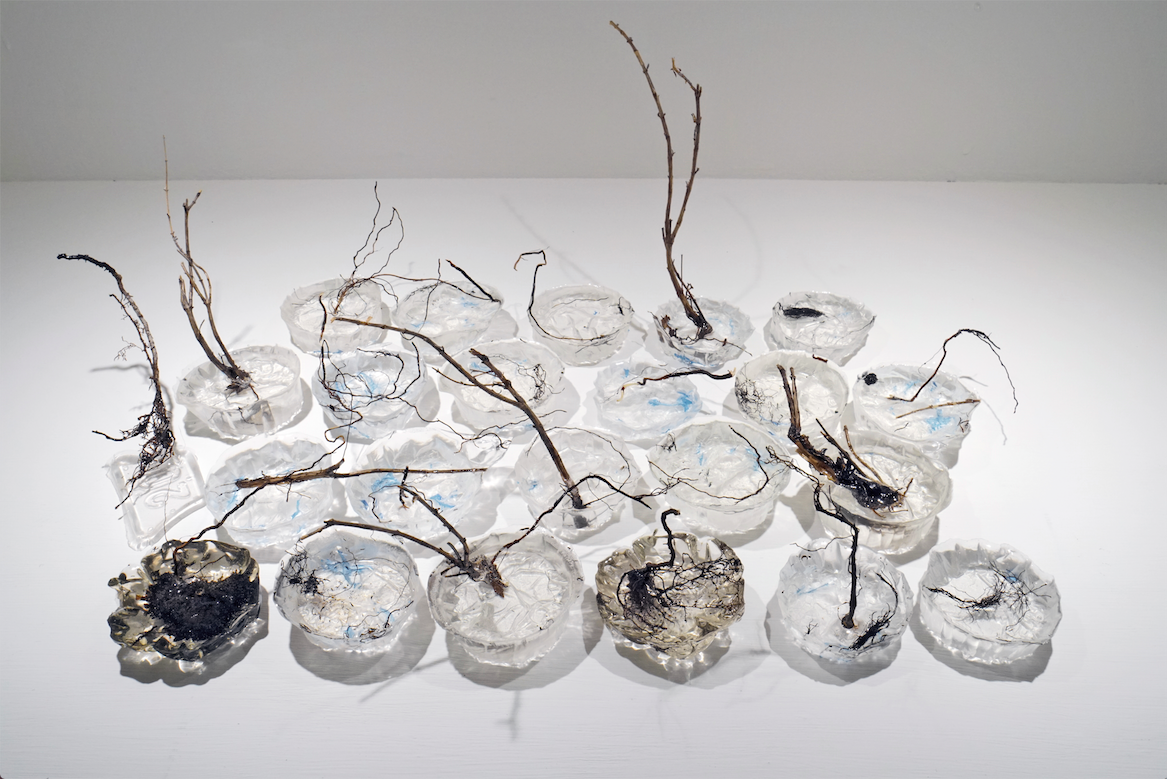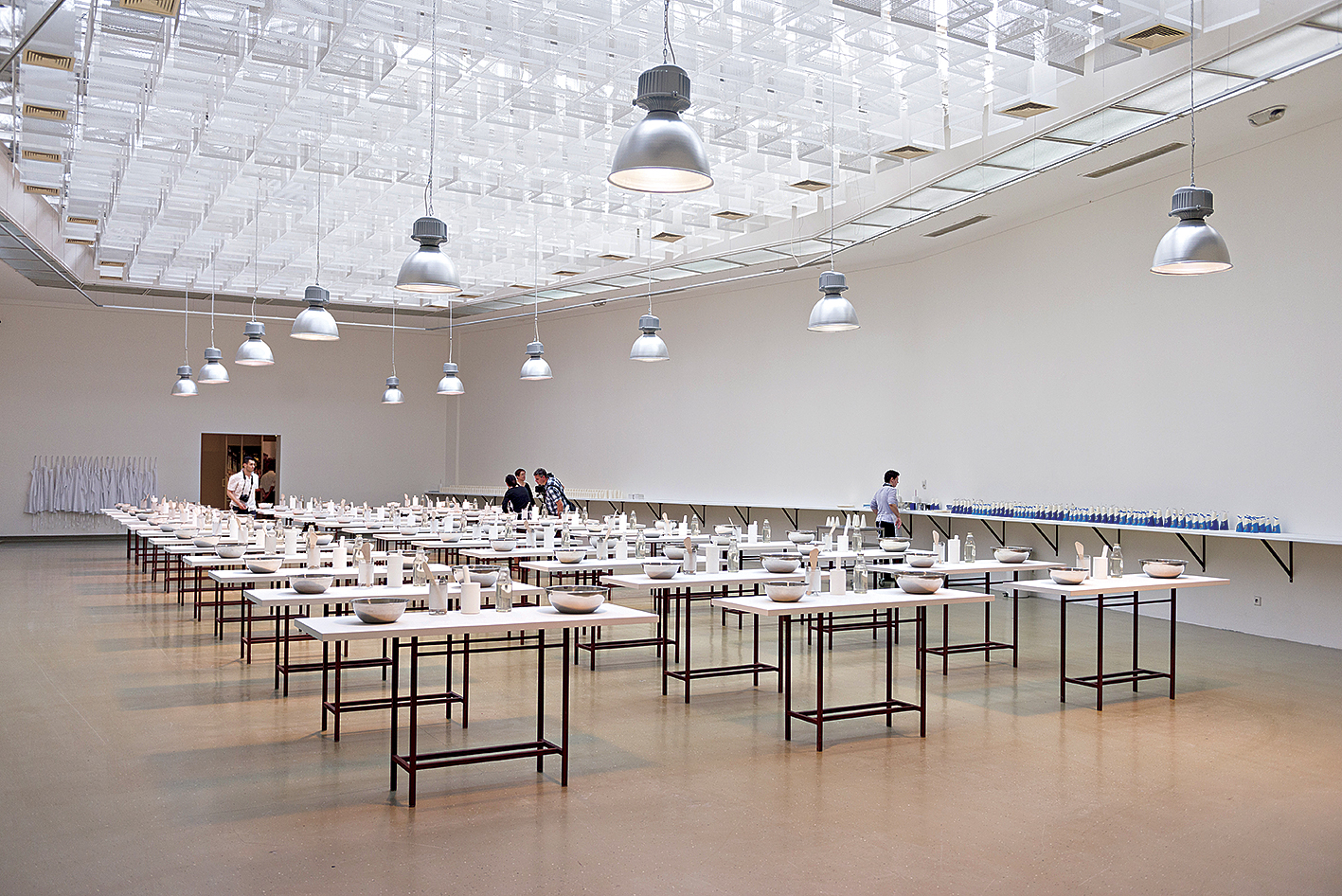“Gardening activity is of five kinds, namely, sowing, planting, fixing, placing, maintaining. In so far as gardening is an Art, all these may be taken under the one head, composing.”[1]
The relation between art and the garden – and gardening as an act of composing and curating – can be understood not only metaphorically. In the case of documenta, the first edition was tightly bonded with garden(ing). A grandiose plan by Arnold Bode to stage the first exhibition of the 20th century’s avant-garde art, after the Nazi era banned it as “Entartete Kunst,” was realized in 1955 in Kassel as part of the Bundesgartenschau (German National Garden Show). documenta 1 was an accompanying event of the garden show, supported by the Bundesgartenschau not only financially but in the sense of visibility since the popularity of the garden show contributed to its success.[2]
The first documenta was at least as ambitious and progressive as the last one, documenta fifteen, surrounded by misunderstandings and scandals.[3] Whereas the first edition sought to build up a new art scene on the ruins of Kassel and an attempt to re-connect to the Western art world, documenta fifteen tried to demolish the dominant Western perspective through the concept of lumbung, understood as harvesting the knowledge of the common. The latter questioned the notion of the artwork and the rules of the art world, and focused on issues of collectivity, sustainability and ecology. Ilona Németh’s project Floating Gardens, presented by the lumbung partner OFF Biennale as part of their “What Ifs and Why Nots” project, was one of the artworks which raised those questions.
Németh’s Floating Gardens is a new version of the artist’s earliest project of the same title, which was presented in the exhibition “Art on Lake” in Budapest, Hungary in 2011.[4] In this work, containing two floating polypropylene objects anchored to the lake, fully planted with different types of plants, the artist thematized the wanted control by humanity. Control of nature is one of the main traits of humans, and the case of structure the garden can be a valid case-study: for English gardens (introduced in the 18th century), which one of her objects referred to, “the desire [was] to transform the countryside into a garden that resembles the countryside”.[5] The second object rooted from the structure of French garden design (introduced in the middle of the 17th century), which shows the radical control of nature in a more unambiguous way. For documenta fifteen, instead of critically reflecting on the well-known garden designs, she replanned the project with a forward-looking concept and created the Future Garden and the Healing Garden.[6] Németh recycled the containers but selected the plants and composed the gardens differently. For the Future Garden, she cooperated with climate experts and researchers of the University of Kassel to choose species which have adapted to global weather changes and/or have the ability to cleanse the soil. The artist filled the container with a parcel of soil, together with its diverse vegetation that has spontaneously emerged due to climate change. The parcel was taken from the university’s campus and the plants growing there were combined with intentionally chosen plants.
Spontaneous vegetation grows in its own right and appears in spaces and times beyond human control, so these species are regarded as weeds. The paradigm shift towards these plants can be seen in landscape architecture and urban design for decades; preserving and ‘using’ these species in public space is the most sustainable, maintainable and cost-effective way. However, this perspective is not as popular as it could be, and unfortunately, examples remain only case-studies. Future Garden combined wild urban and cultivated plants, and was returned to the university after documenta ended.

Materials: Polypropylene, soil/substrate, plants, solar panels, pumps.
Dimensions: 3.5 × 4.5 × 0.9 m, 2 pieces.
Production: documenta fifteen and OFF-Biennale Budapest, White Night with financial support from FPU.
Photo: author, May and September 2022, artistic collection Třebešice and the author.
The other floating container called Healing Garden focused on plants which can “support” each other, or as the project description put it, “consists of herbs and vegetables which benefit from each other’s company.”[7] Symbiosis and forming a sustainable plant community with these species have been implemented. Considering these two compositions and their form – namely gardens as controlled and composed constructions – and the artist’s intention, more questions arise. In her artistic practice, Németh is interested in the problem of interaction between a work and its viewers, but since visitors could not get in direct contact with the floating gardens but only looked at them, the interaction was limited.
The question of control is floating over this project. The artist exercised control since she composed these installations: she chose the plants and the volunteer gardeners who cared for them. Nevertheless, every act besides these, such as the reproduction of these species, is outside of her influence. Who or what takes over control in this case? As Németh put it, the gardens “remind us of how we have created controlled territories for centuries and, at the same time, how we have lost the illusion of control in the context of ecological and economic catastrophe.”[8] This brings us to a strong paradox: while the human factor played a huge role in the mentioned context, we should not be so naïve to easily give in to the illusion of having the power of fixing the errors that we caused.
[1] Finlay, Ian Hamilton, ‘More Detached Sentences on Gardening in the Manner of Shenstone.’ PN Review 42, Vol. 11, No. 2. (1985), p. 18. Quoted by Laurie Cluitmans (ed.), On the Necessity of Gardening. An ABC of Art, Botany and Cultivation. Amsterdam – Utrecht: Valiz – Centraal Museum, Utrecht, 2021, p. 54.
[2] See Julia Voss, How documenta 1955 Almost Never Happened. In: Raphael Gross, Lars Bang Larsen, Dorlis Blume et.al., documenta. Politics and Art. Munich – London – New York: Deutsches Historishes Museum – Prestel, 2021, pp. 37-45., and text of catalog item by Julia Voss, Ibid. p. 50.
[3] See the 12th issue of the online magazine Mezosfera, edited by Dóra Hegyi és Gyula Muskovics. http://mezosfera.org/category/issue/12-documenta-15/ (last accessed: 05.18.2023.)
[4] Art on Lake. Curated by Péter Fitz, Krisztina Jerger, Alexander Tolnay. Museum of Fine Art, Budapest, venue: City Park Boating Lake, Budapest, Hungary, 24 May 2011 – 4 September 2011.
[5] Ibid. p. 49.
[6] Ilona Németh changed the original plan with the involvement of OFF-curators Eszter Lázár and Bori Szalai.
[7] Ilona Németh: Floating Gardens. OFF Biennale Budapest, https://offbiennale.hu/en/2022/news/ilona-nemeth-floating-gardens/ (last accessed: 05.19.2023.)
[8] Floating Gardens, project description. https://www.ilonanemeth.sk/floating-gardens-kassel-2011-2022/ (last access: 05.23.2023.)



